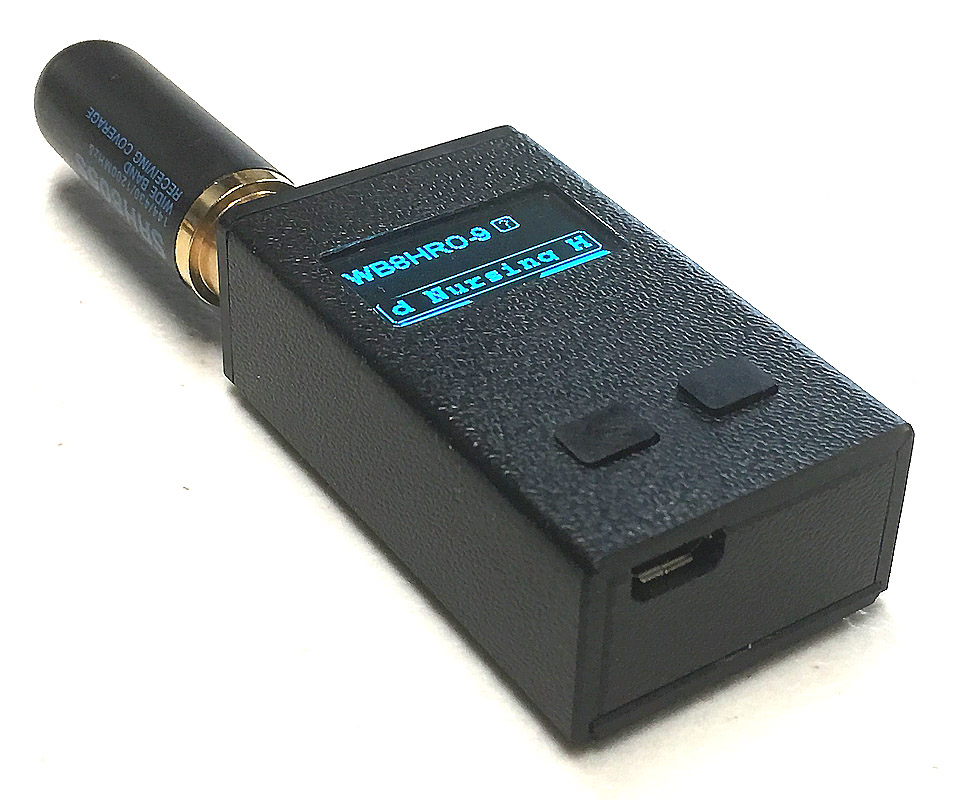
| WA8LMF Home Page | WA8LMF Resume | Main Ham Radio Page | Main APRS Page | HF APRS Operation | Updated 25 August 2020 |
Ever since I acquired an Autel EVO drone in early 2019,
I thought I would be cool to place an APRS tracker on it. However, I thought it
would be hopelessly impractical - the radio, battery and GPS receiver would be
too big and heavy. And further, it would probably affect the flying dynamics and
stability of the drone. I speculated about using the Big Red Bee tracker
device made for model rockets available here:
https://shop.bigredbee.com/
However, this device is a transmitter-only, requires an external battery, and a
case of some sort.
Recently, a posting on the TAPR APRSsig mailing list
made me aware of the German-made PicoAPRS miniature APRS transceiver available
here:
http://picoaprs.de/index_en.html
In the US, this device is available from DX Engineering:
https://www.dxengineering.com/parts/wmo-picoaprs

This device, smaller than a matchbox, contains a completely self-contained 1-watt FM transceiver, a uBlox dual-mode GPS/GLONASS receiver, a fully-functional 1200-baud packet TNC, and a 3.2 watt-hour lithium-ion battery. The radio can be set to any frequency in the 144 to 146 MHz range in 5 KHz steps. I.e. it doesn't cover the upper half of the North American two-meter band.
Without the antenna, it weighs 44 grams (1.6 ounces). The German designer of this device, DB1NTO, has packed an incredible number of capabilities into this tiny device.
It can function as:
The provided micro-USB port serves multiple functions:
Most APRS-related serial devices use a serial-port speed of 1200, 4800, or 9600 baud. The PicoAPRS is hard-wired to operate at a com port speed of 115,200 baud. Be sure your APRS or mapping application can handle a 115K port speed! Fortunately, for my setups, the venerable UIview32 offers this rate in it's comport configuration menu.
The internal serial-over-USB chipset is the Silicon Labs CP210x device. This is the same chip used in the Kenwood and Yaesu APRS radios for serial-over-USB, and uses the same driver as these radios. "Silabs" offers compatible drivers for the CP210x chip for versions of Window all the way back to Windows 98.
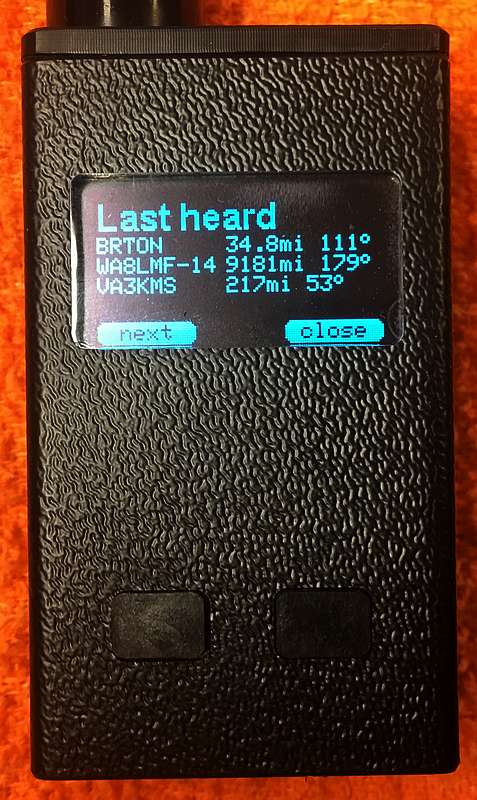
The PicoAPRS display showing recently-heard stations.
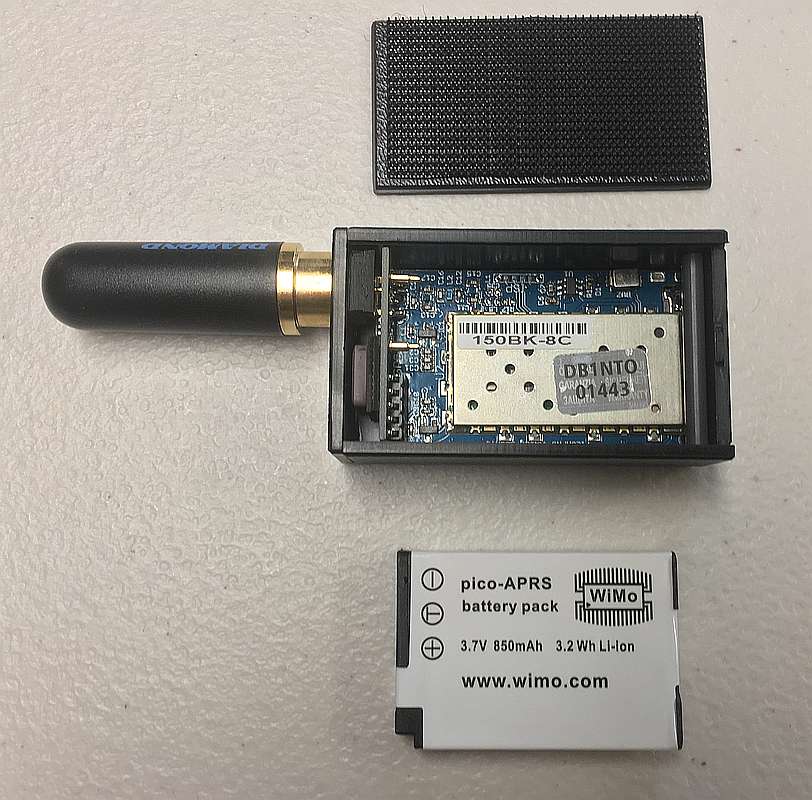
Interior view showing the removable cell-phone-like "wafer" battery pack. Note
the Velcro patch on the battery door.
The battery is claimed to power the device as a tracker for over 10 hours, if you enable all the power-saving options. These include disabling the receiver (i.e. transmit-only), turning off the OLED display, and turning off the GPS receiver between beacons.
The antenna connector is a standard female SMA socket. i tried several ultra-compact SMA-based dual-band (144/440 MHz) antennas. Even with the tiny "micro-stubby" Diamond antenna, I was surprised to see the PicoAPRS transmittter hit a digipeater 40 miles away while lying on my dining table.
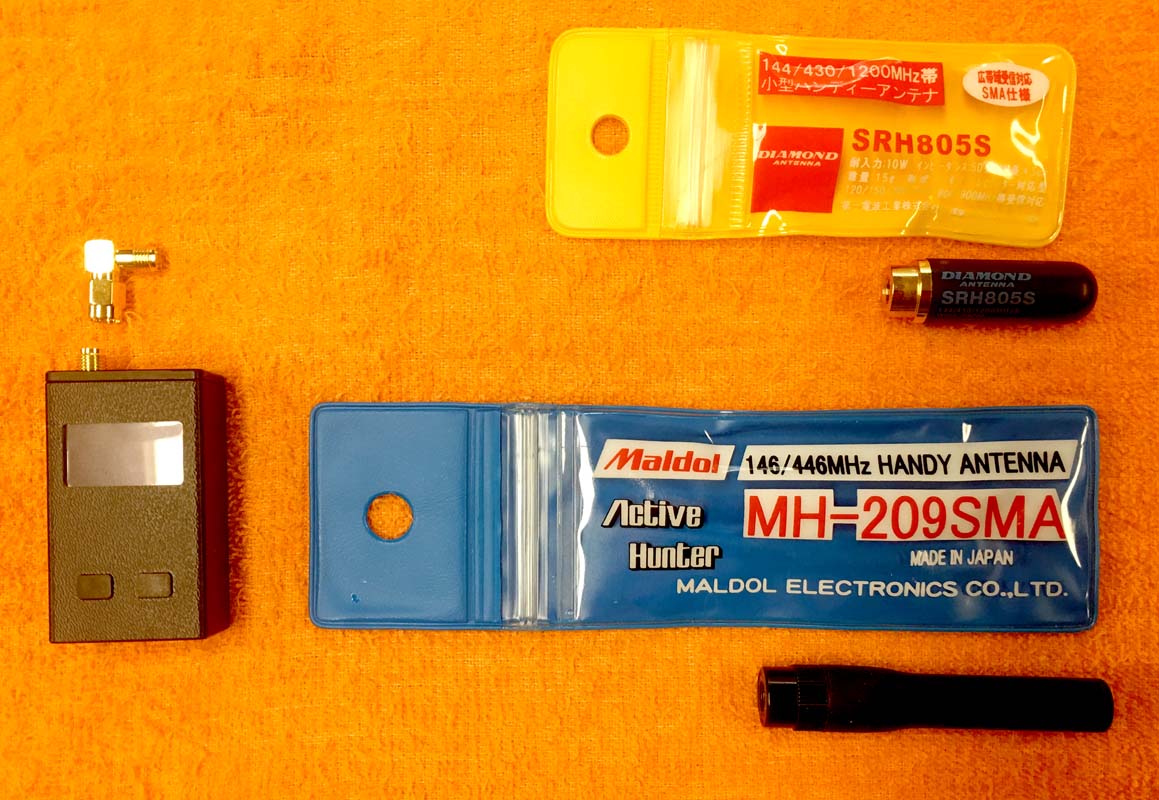
SMA-based antennas used on the PicoAPRS radio.
I wanted the radio to lie flat on the back of the drone,
but wanted the antenna to be vertical, so I used an SMA 90-degree "elbow"
connector between the radio and the antenna. These right-angle adapters are
relatively hard to find for SMA fittings, but I found the one above the radio in
the picture here on Amazon:
SMA Male to Female Right Angle 90-Degree Adapter
I finally choose the longer antenna in the picture above because it was soft and flexible. Hopefully, if I graze a tree branch or other obstacle with the drone, the soft one will bend & give, rather than pull the radio off the drone.
I mounted the radio to the back of the drone with high-strength industrial Velco. I did some fairly violent aerobatics with the drone to confirm that the Velcro could retain the PicoAPRS radio securely on it's back.
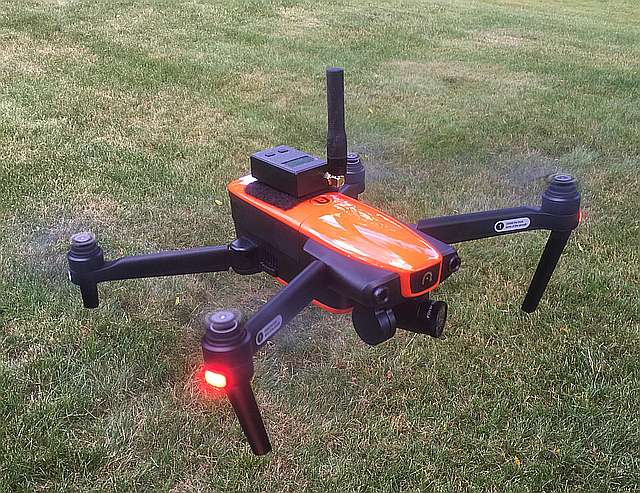
|In this photo the Autel EVO drone is hovering about 2 meters (6 feet) off the
ground.
(The propellers are spinning far too fast for the iPhone 6s+ camera to capture
them.)
I was concerned that the added weight of the radio might affect the weight and balance of the drone. The added device appears to have not affected the behavior of the drone at all.
My second concern was that the added radio and electronics in the PicoAPRS might cause some EMI/RFI to/from the drone's electronics. So far, I have not observed any side effects from the added electronics.
Since the PicoAPRS radio can function as a stand-alone digipeater, mounting the radio on the drone means once can instantly place a low-power digi 400 feet above ground level. At least for the duration of the drone's battery. The claimed max flight time of this drone is about 25 mins on a single battery charge. In my real-world tests, the EVO alone automatically landed after 20 mins 30 seconds in three successive tests hovering about 15 feet (4.5 m) off the ground. With the PicoAPRS and antenna Velcroed to the back of the drone, the flight time dropped to 17 mins 20 seconds.
Part of the purpose of this project was to create a "search & rescue" tracker for downed APRS balloons. At the end of a balloon flight equipped with an APRS tracker, the balloon often lands in a remote area. The balloon's low-power APRS tracker transmitter, that was so easy to hear & track 1000's of feet in the air, often becomes impossible to receive on the ground. With the PicoAPRS digipeater operating, one would launch the drone from the last known location of the balloon. With the digi 300-400 feet up in the air, it should be able to hear the grounded balloon and retransmit it's beacons over a 20-30-mile radius.
